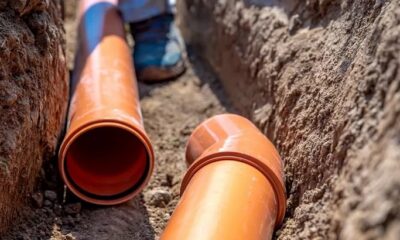Features
Most Popular Types of Concrete Floor Finishes
Concrete finishes allow for an endless array of decorative options.
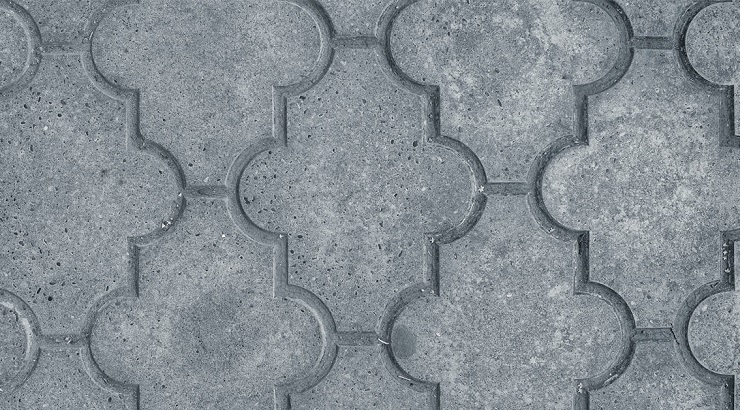
A concrete finish results from compressing, flattening, and polishing the surface of freshly poured concrete, yielding a smooth, attractive, and durable slab.
Known as concrete finishing, this procedure begins right after the concrete is poured, ensuring a seamless blend of form and function.
The plasticity of new concrete allows for limitless shapes, designs, and finishes.
Specialized tools are used based on the desired look and the type of concrete finish floor, transforming an ordinary cement finish floor into stunning flooring.
Benefits of concrete floor finish
In contrast to hardwood, laminates, ceramic tiles, and rubber, concrete finishes excel in durability and require minimal maintenance.
Ideal for high-traffic areas, concrete patio finishes provide customization options, various textures, colors, and designs. Besides, concrete flooring is favored in hot climates for its cooling properties, making it well-suited for temperate weather.
Concrete finishes also offer additional functional benefits such as increased durability, water resistance, and reduced slips and trips.
Finishes on concrete
Here are the most common types of concrete finishes.
1. Trowel concrete finish
Trowel finish, also referred to as the “smooth finish,” is the basic level of concrete finishing. However, these types of concrete floor finishes require a level of skill and precision to achieve a flawless, even, and blemish-free surface.
The procedure includes carefully leveling, floating, and troweling the wet concrete before it solidifies into a smooth, glossy texture.
Masons use tools like screeds and trowels to achieve this finish.
Concrete screeds, usually made of metal or wood, are dragged across the surface, followed by refining with a trowel to eliminate minor imperfections.
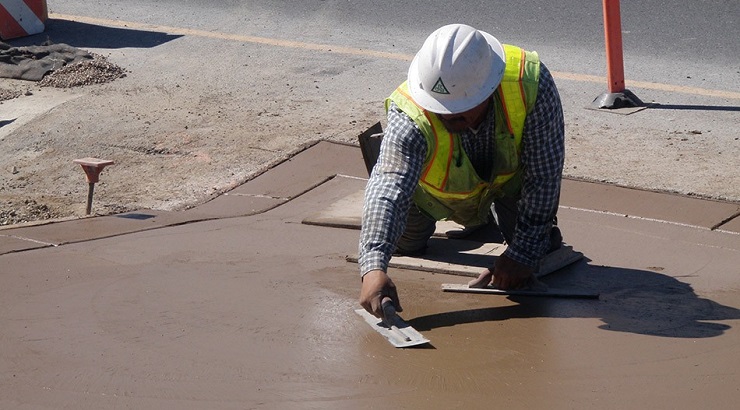
In larger projects, power trowels resembling large fan blades are often employed for efficiency.
Uses: Suitable for indoor spaces, roof slabs, garages, utility areas, commercial areas, and walls.
Pros: Budget-friendly, versatile, quicker to install compared to alternative concrete finishes.
Cons: Not recommended for outdoor spaces, may become slippery when wet, less aesthetically appealing than other concrete finish choices.
2. Stamped concrete finish
Also known as textured or imprinted concrete finishes, stamped concrete finish is obtained by pressing a pattern on the freshly leveled concrete surface.
This decorative outdoor concrete finish adds creativity to various spaces. It is commonly used for floors in driveways, sidewalks and patios.
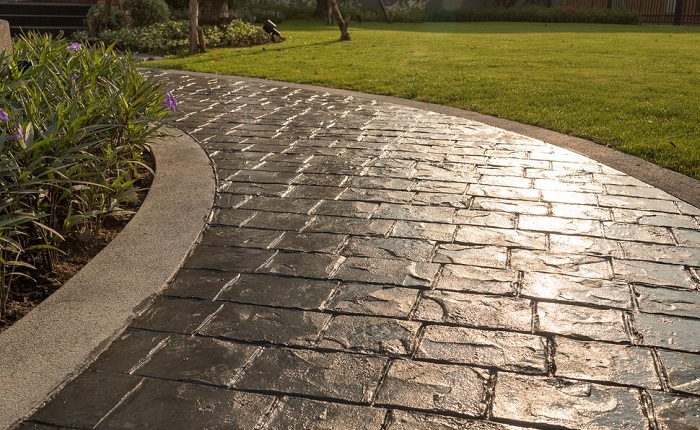
Achieving the desired effect involves workers with specialized training and the use of professional equipment for handling hardeners, release agents, and forms.
Uses: Suitable for outdoor spaces, recreational areas, parks, patios, walkways, and landscaping.
Pros: Allows for limitless customizations and designs to achieve the desired aesthetic, creating visually appealing decorations.
Cons: Etched designs may compromise surface durability, making it prone to cracking and freezing.
3. Broom concrete finish
As the name suggests, a broom concrete finish is achieved by dragging a broom across freshly laid concrete to create ridges that provide traction control.
Though less visually appealing than other finishes, these ridges provide a non-slip surface, ideal for safety-focused areas like swimming pools and walkways.
RELATED: How to Finish Concrete Floor in 7 Steps
Swirl concrete finish, an elevated broom finish, features uniform swirled imprints, arc patterns, or geometric designs achieved by swirling the broom.
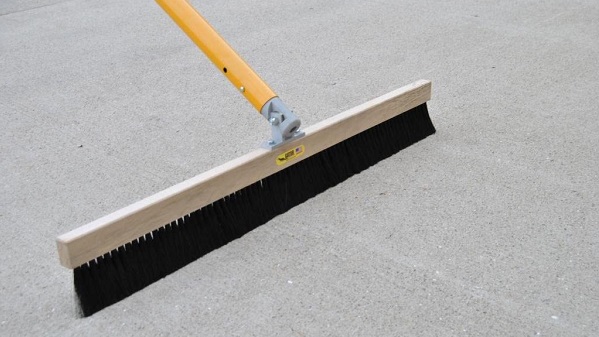
You can modify the dimensions of these ridges in various concrete broom finishes by selecting bristles of different sizes.
Uses: Outdoor spaces, driveways, walkways, parks, swimming pools, patios.
Pros: It offers better traction and is perfect for outdoor activities near sources of water.
Cons: Water and dirt collects between the ridges.
4. Polished concrete finish
A polished concrete finish is made by grinding and polishing a slab, using machines equipped with diamond abrasives, and a chemical to achieve the desired texture.
Chemical hardeners and coatings are applied during the process to enhance protection against water damage and stains.
Popular for modern industrial-style interiors, polished concrete is chosen for its beauty, durability, and versatility in various applications.
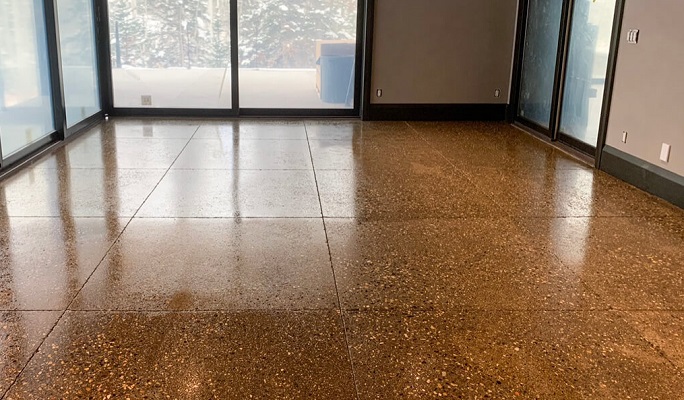
Uses: Indoor spaces, expansive warehouses, retail stores, showrooms, office buildings, and residential areas.
Pros: It offers a stylish and contemporary aesthetic and is known for its durability.
Cons: Unsuitable for outdoor environments and areas with heavy vehicular traffic.
5. Rock salt concrete finish
A salt concrete finish is accomplished by pushing in coarse rock salt crystals into freshly poured concrete slas using specialized rollers and later washing them off with a torrent of water after the concrete is set.
RELATED: How to Check Quality of Cement
This type of concrete finish features a surface with small pits that enhance traction, creating a decorative, non-slip surface, making it ideal for pool decks.
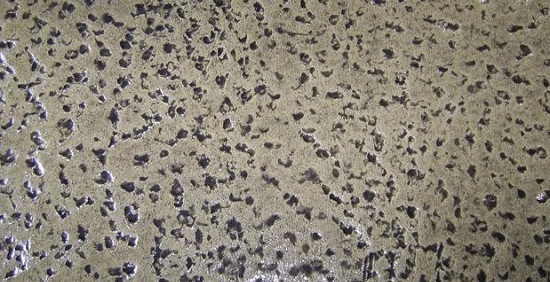
Uses: pool decks, areas near water sources, large fountains
Pros: skid-resistant, enhances traction in water-adjacent areas, visually appealing, budget-friendly
Cons: small pits may collect water, requiring proper sealing to prevent potential cracking.
6. Epoxy resin finish
Epoxy resin finishes are commonly chosen to seal and protect concrete surfaces.
Floor epoxy, a type of paint, consists of a liquid catalyst and hardener that are mixed just before application.
This mixture undergoes a chemical reaction, producing a high-gloss, vibrant, and extremely durable finish, commonly used in high-traffic commercial applications.
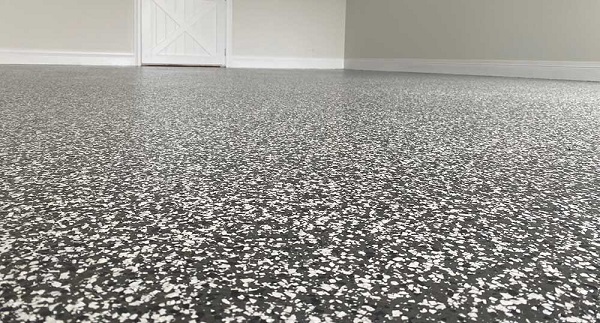
Uses: Suitable for indoor spaces.
Pros: Offers stunning aesthetics, high durability, and a luxurious appearance.
Cons: High cost and labor-intensive.
7. Stenciled concrete finish
Stenciled concrete finishes closely resemble stamped finishes in their goal of enhancing the surface with a decorative appeal. However, they differ in execution.
As the name suggests, stenciled finishes utilize paper stencils instead of specialized stamps. This finish is generally easier to install, requiring less expertise.
It is achieved by laying a stencil on freshly poured concrete and gently working it into the surface. After partial curing, the stencil is lifted, revealing the design.
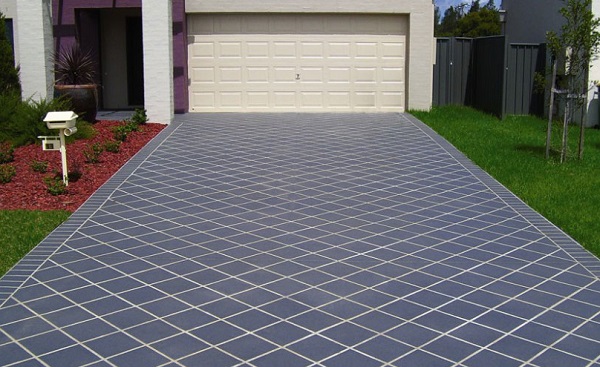
Common stencil patterns often replicate the appearance of bricks, tiles, natural stone, geometric shapes, and cobblestones.
Uses: Interiors, patios, pathways, landscaping.
Pros: Cost-effective substitute for stamped concrete, imparts decorative flair to concrete surfaces.
Cons: Susceptible to cracking; lower durability.
8. Exposed aggregate finish
Exposed aggregate is a popular textured concrete finish achieved by removing the top layer of freshly poured cement to reveal coarse decorative aggregate.
In addition to aesthetics, the exposed aggregates provide enhanced traction, which is particularly beneficial for outdoor spaces.
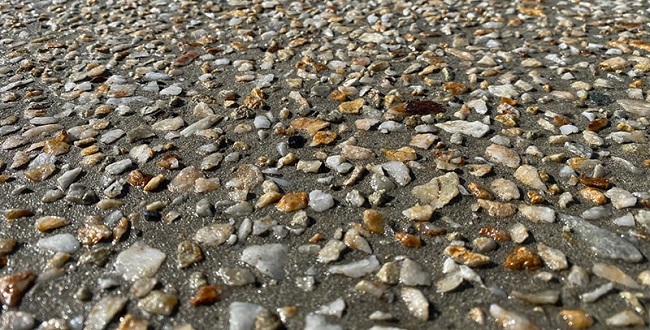
This finish often includes colored natural stones like quartz, granite, basalt, and limestone, or options such as recycled glass or seashells for a decorative look.
Uses: Outdoor areas, driveways, walkways, parks, swimming pools, patios.
Pros: Visually appealing with non-skid properties, enhancing outdoor spaces uniquely.
Cons: Higher cost compared to alternative finishes; susceptible to wear without proper sealing.
9. Swirl Finishes
These are among the most brilliant types of concrete finishes obtained by spreading the concrete surface in a consistently overlapping circular pattern.
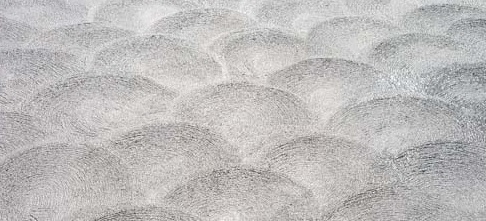
Swirl finish provides a beautiful surface ideal for outdoor applications. These finishes provide safer walk when compared with smooth concrete finishes especially during the rainy season.
10. Colored finish
Adding color is an excellent method to complete concrete surfaces, providing endless possibilities for color combinations and imaginative applications to enhance the vibrancy of concrete finishes.
Some colors, like pigments, are introduced during the concrete mixing process, while other techniques, such as staining, are applied after the concrete has cured.
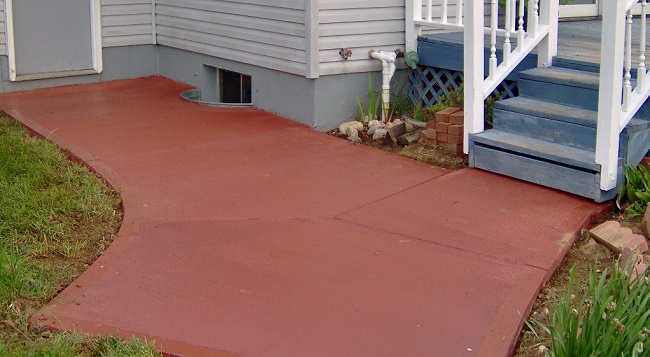
Uses: Ideal for outdoor and indoor spaces, commercial facilities, industrial buildings, sports facilities, and recreational areas.
Pros: It provides an extensive array of color options, requiring minimal maintenance.
Cons: Colors might fade with concrete aging, necessitating a longer application process and being susceptible to peeling in high-traffic areas.











